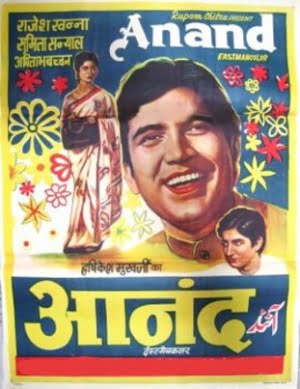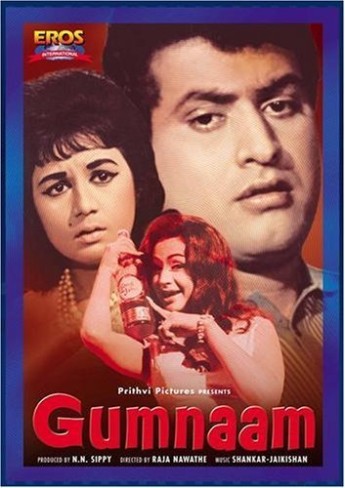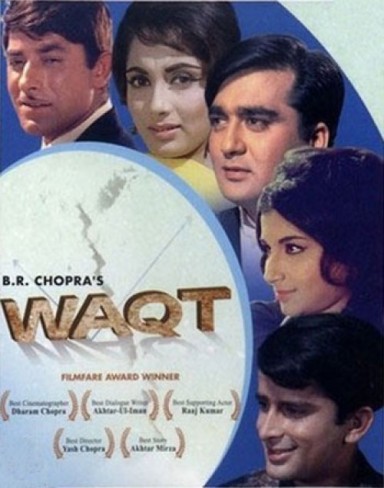
A few years back, on a bright and lazy Sunday afternoon, finally bored of all that was on the TV, I asked my father how films had been during his times. It’s not that I am against Bollywood films. It’s just that I prefer watching Hollywood films more because of their good scripts and originality. I told him about how Hollywood films made more sense to me than the Bollywood masala films of today. Big mistake. Because as soon as I made him aware of my skepticism for Bollywood films, he introduced me to the bold and brilliant side of the Hindi cinema. The world of Rajesh Khanna and Amitabh Bachan and Sunil Dutt and Nutan; of how people used to shout against the villains in the movie theatres; how in his younger age, my father used to think of the films to be true, thinking that the hero actually dies in the end. But most importantly, he talked about how such films shaped the society in which they were made. He literally ordered me, to watch a few old Hindi films, before commenting on them. This opened my eyes to the forgotten world of old Hindi films. These were the films which really impacted me:
- Purab Aur Paschim:
The famous patriotic song, Jab Zero Diya mere Bharat Ne, is from this very movie. However, the setting of the song was a shock to the Indian audience, as it was filmed in a room full of men smoking cigarettes and women in miniskirts. As the name suggests, the movie compares the lifestyles of Indians living in India and abroad. Released in the year 1970, this film is about the son of a freedom fighter, Bharat (Manoj Kumar). When Bharat goes to London for his higher studies, he finds that the Indians living there, are ashamed of their Indianness. However he falls in love with his uncle’s anglicized daughter, Rita (Saira Banu), even though she leads a very westernized life. Through the movie he changes her perspective about both life and India. When she falls in love with him, she has to decide whether to live her modern, carefree life in London or leave everything and go to India with Bharat. This film raised questions as to where our society was advancing towards; both in terms of culture and in terms of patriotism.

- Anand:
The phrase that immortalized Rajesh Khanna, Babu Moshai, comes from this film. Released in the year 1971, this film is about two people: an oncologist, Dr Bhasker Bannerjee (Amitabh Bachchan) and his cancer patient, Anand (Rajesh Khanna). Their doctor-patient relationship is superbly described in this film. The film starts with Dr Bhasker launching his book, titled Anand .He reveals that the book is not a fictional work but is based on the life of a real person. Dr Bhasker is a no-nonsense character, who leads a very straight forward and serious life. But when one day his friend introduces him to a cancer patient, Anand, his perceptions about both life and death transform. He is astonished to know that even though Anand is aware of his condition he is still so lively. Anand learns about the problems in Dr Bhasker’s life and tries to solve them, even in his last days. Zindagi Kaisi Hai Paheli, one of the best Hindi songs, was given by this film. This film has achieved a cult status in the Hindi Film Industry. The most basic message of this movie is to live each day as your last.

- Sujata:
Considered to be as one of the most compassionate films in the history of Indian cinema, this film talks about the presence of the practice of untouchability in India during the mid-20th century. Released in the year 1959, this film is about the romance between a Brahmin boy, Adheer (Sunil Dutt) and an untouchable girl, Sujata (Nutan). Taking Dr B.R. Ambedkar’s fight against untouchability and the myth of Chandalika at its backdrop, this film asked the Indian audiences, of those times, whether the practice of untouchability is really worth it. Sujata is never allowed the respect, acknowledgement or for that matter, even love, just because she was born in a lower caste family. But her life takes a sharp twist when she meets Adheer who makes her realise what she could do and what she is capable of. This was my first full-fledged black and white movie I watched in my life. This film helped me to learn a lot about the people of those times. This is one of the very few Hindi films that was critically acclaimed around the world and won many accolades in the various international film festivals.

- Gumnaam:
The song Gumnaam Hai Koi, one of the most erry and terrifying Hindi song, is from this film. Released in the year 1965, this film introduced the genre of murder mystery in the Hindi film industry. Based on Agatha Christie’s famous novel, And then there were none, this film is about seven unlike people who win a free trip to an exotic island. But they are left stranded on the mysterious island in a fake emergency landing. Later in the film, it is revealed that all the winners were deliberately made to win the trip in the lucky draw so that they could all be murdered one by one as they were (unknowingly) part of the murder of a rich man, Sohanlal. This film is a must watch for all the mystery lovers out there.

- Waqt:
One of the best Hindi films, Waqt explains to the audience that one should never be too proud of his/her wealth. Released in the year 1965, this film is about a rich man, Lala Kedarnath Prasanta, his wife, Laxmi and their three sons, Raju, Ravi and Vijay. They were living prosperously until one day; on the occasion of the brothers’ birthday (all the brothers shared a single birthday, though they were born in different years), when a massive earthquake hit the gathering and shattered their lives. The oldest son, Raju, ends up in an orphanage, the middle son, Ravi, is found on a road by a rich couple who take him to their home to raise him as their own son, while the youngest son, Vijay, who is still an infant is with his mother. Unable to find the rest of the family, Vijay and Laxmi live in poverty. The film then takes a time leap, where we find that Raju grows up to be a thief, Ravi becomes an advocate and Vijay becomes a driver. This film is very complex in its structure but really worthy to be watched. The lives of these characters are beautifully intertwined in this work of art. This film shows the audiences that time never remains the same.

My perceptions about the India of those times transformed after watching these masterpieces. I hope that after watching these films no one would doubt the immense talent of the Hindi films. I would recommend all of you to watch these films at least once in your lives.
By- Utkarsh Panwar































